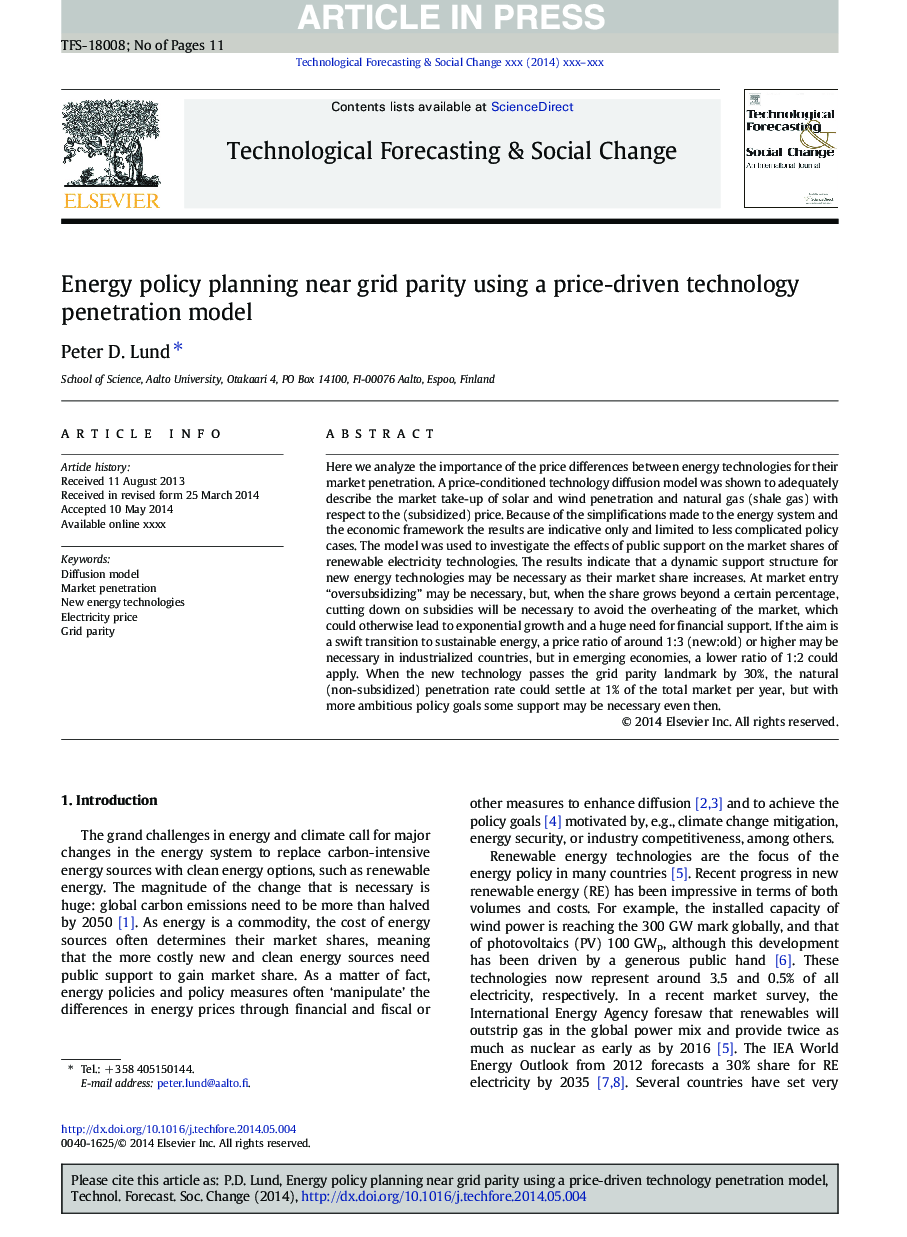| کد مقاله | کد نشریه | سال انتشار | مقاله انگلیسی | نسخه تمام متن |
|---|---|---|---|---|
| 7256899 | 1472410 | 2015 | 11 صفحه PDF | دانلود رایگان |
عنوان انگلیسی مقاله ISI
Energy policy planning near grid parity using a price-driven technology penetration model
ترجمه فارسی عنوان
برنامه ریزی سیاست انرژی در نزدیکی شبکه با استفاده از مدل نفوذ فناوری مبتنی بر قیمت
دانلود مقاله + سفارش ترجمه
دانلود مقاله ISI انگلیسی
رایگان برای ایرانیان
کلمات کلیدی
مدل توزیع، نفوذ در بازار، فن آوری های جدید انرژی، قیمت برق، شباهت گرید،
موضوعات مرتبط
علوم انسانی و اجتماعی
مدیریت، کسب و کار و حسابداری
کسب و کار و مدیریت بین المللی
چکیده انگلیسی
Here we analyze the importance of the price differences between energy technologies for their market penetration. A price-conditioned technology diffusion model was shown to adequately describe the market take-up of solar and wind penetration and natural gas (shale gas) with respect to the (subsidized) price. Because of the simplifications made to the energy system and the economic framework the results are indicative only and limited to less complicated policy cases. The model was used to investigate the effects of public support on the market shares of renewable electricity technologies. The results indicate that a dynamic support structure for new energy technologies may be necessary as their market share increases. At market entry “oversubsidizing” may be necessary, but, when the share grows beyond a certain percentage, cutting down on subsidies will be necessary to avoid the overheating of the market, which could otherwise lead to exponential growth and a huge need for financial support. If the aim is a swift transition to sustainable energy, a price ratio of around 1:3 (new:old) or higher may be necessary in industrialized countries, but in emerging economies, a lower ratio of 1:2 could apply. When the new technology passes the grid parity landmark by 30%, the natural (non-subsidized) penetration rate could settle at 1% of the total market per year, but with more ambitious policy goals some support may be necessary even then.
ناشر
Database: Elsevier - ScienceDirect (ساینس دایرکت)
Journal: Technological Forecasting and Social Change - Volume 90, Part B, January 2015, Pages 389-399
Journal: Technological Forecasting and Social Change - Volume 90, Part B, January 2015, Pages 389-399
نویسندگان
Peter D. Lund,
